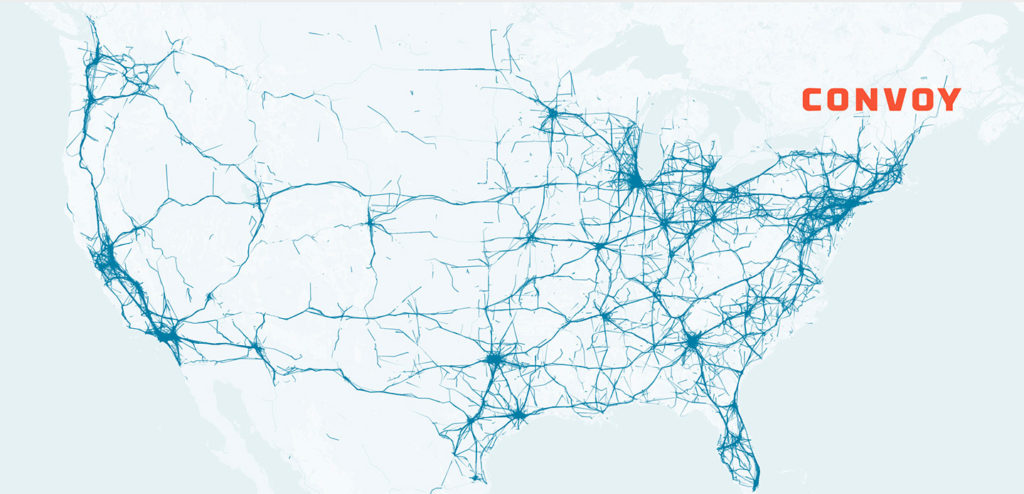How machine learning can help move your freight
Shippers • Published on July 17, 2020
You’ve probably seen a headline or two about the use of AI in supply chain management, or how artificial intelligence and machine learning are revolutionizing supply chain operations.
Despite the ink in the media, it’s surprisingly difficult to track down a plainspoken description of what machine learning is, how it works, and why it’s so well suited for automating tasks involved in logistics management.
In this blog, we break down how machine learning works and how it can automate dozens of the repetitive tasks involved in truckload freight transportation.
What is machine learning?
Machine learning (or simply ML) is a category of software that improves on its own through experience. This independent improvement is what makes machine learning distinct from traditional computer programming.
Machine learning excels at analyzing lots of information, discovering patterns, and using pattern recognition to make decisions. A piece of machine learning software is often called a “model.” It’s a set of computer instructions that gets trained to identify patterns in data and perform specific actions. Once deployed, an ML model can perform tasks incredibly quickly and accurately, and over time, the accuracy improves as the model is fed more data.
An ML model can “learn” through two primary ways:
- By analyzing more data
- By having its instructions adjusted by a software engineer
This combination improves the model’s ability to recognize patterns and perform actions with better results.
How machine learning differs from traditional programming:
To understand the benefits of leveraging AI in supply chain and logistics, we need to understand what makes machine learning special.
In traditional computer science, programmers give the computer a set of rules for solving a specific task. The computer takes these rules along with some input data and generates an output:

For example, a sales tax calculator is an example of a problem that can easily be solved by traditional computer science. It takes input data (e.g. “Washington State”) then uses rules to look up the sales tax for that state, and provides that as its output:

But sometimes a system is so complex that it would be impossible to give a computer all the rules required to fully understand it. For example, it’s not feasible to give a computer every rule required to accurately perform facial recognition because every face is unique. Similarly, self-driving cars can’t be programmed by traditional computer science because every driving situation is unique—the type of car being driven, its speed, the traffic, the weather, the road conditions, the time of day, etc.
While traditional computer science is unfit to solve these complex problems, they’re ideal for machine learning. With machine learning, programmers give the computer a set of inputs and a set of outputs, and the computer figures out the rules on its own:

The more data you feed a machine learning model, the more it understands the problem and the more accurate its results. If your smartphone’s photo app has ever asked you to confirm whether a certain photo is a match for someone in your contacts, it’s machine learning in action. With more data, its results become more accurate:

As it turns out, freight networks exemplify the type of complex system that benefits from machine learning.
Why machine learning is a perfect match for freight
Machine learning has a handful of strengths that outperform the way things traditionally get done in the freight industry. Here are five strengths of machine learning:
- Analyzing massive sets of information
- Performing repetitive tasks without error
- Moving fast and multitasking
- Working around the clock
- Improving continuously
These are the features that make it clear we need more AI in supply chain operations. Each of these strengths directly applies to different areas of truckload transportation. Let’s dig into each of them:
- The freight industry generates gargantuan data sets that only ML can handle.
With over 400 million class 8 shipments per year in the US alone, the freight industry generates massive amounts of data. Each individual shipment has thousands of pieces of data that can be tracked: pickup and dropoff time, facility wait times, price, tender acceptance, fuel used, GPS coordinates throughout the shipment.
No single person, or even group of people could keep track of this much data. For example, if you operated in a marketplace with only 1,000 shipments available on a daily basis, and you tracked combinations of three shipments at a time, then there would be 1 billion permutations. While no one person could handle this much information, this is no problem for an ML model. In fact, ML models get more effective with the more information they’re given. - Repetitive logistics tasks are ideal for ML.
Each truckload shipment involves people performing repetitive tasks: finding an ideal carrier, vetting the carrier for quality and driver record, pricing the shipment, confirming tender acceptance, arranging pickup and dropoff, resolving issues that arise, finding a replacement in the case of a falloff, and more.
Wherever there is repetition, there are patterns. ML models are designed around recognizing patterns, and can make automatic decisions around the patterns they discover.
- People make mistakes when multitasking. ML doesn’t.
Supply chain professionals may manage dozens — even hundreds — of shipments through the course of the day. The scale, complexity, and imperative to move fast leads to supply chains that are full of people multitasking. Multitasking inevitably leads to mistakes. A mistake with a load at any point in the process could lead to a domino effect of supply chain problems downstream.
Multitasking is a common feature for computers. (You may have multiple browser tabs open right now!) ML models can typically analyze millions of example data items and find hundreds of patterns in less than 20 milliseconds. Not only can ML models perform multiple analyses at the same time, they execute tasks quickly and without error. - Freight doesn’t take a break. Neither does ML.
Truckload freight moves 24/7, on nights, weekends, and holidays. People can only work so many hours a day, which can lead to lapses in service and errors when tasks are handed from one person to another when shifts change. ML models, on the other hand, run continuously without taking a break. They can keep up with the pace of freight so that there are never lapses in coverage and support. - Machine learning models never stop improving.
People’s rate of learning in a given area slows down and eventually stops. Think of a freight broker. According to Indeed, the typical tenure of a freight broker is only 1-3 years. For brokers with longer tenure, the rate of learning for years 4-10 of their careers is much slower than it was in years 1-3.
Machine learning models learn at a faster rate, as they analyze larger sets of data than any person could handle, and they learn for a longer duration. ML models don’t change careers or retire.

Convoy employs machine learning to move freight efficiently
Machine learning is at the core of Convoy’s approach to hauling freight. We have over 40 active models that apply machine learning before, during, and after the lifecycle of a shipment. This includes pricing, tendering, matching carriers to loads, setting appointments, calculating the probability of a delay, automatically fixing problems, analyzing freight data for supply chain insights, batching to reduce empty miles and carbon emissions, compliance and safety audits, and more.
Our product and engineering teams have been pioneering ML models that improve supply chain efficiency for the past five years. Machine learning is just beginning its career in trucking and we expect it to be employed in this industry over the long haul.
Put simply, Convoy is the leading platform leveraging AI in supply chain management.
For more information about machine learning and freight:
- Book a Truck with Convoy to gain the benefits of machine learning in freight today.
- Read the FreightWaves article: How machine learning improves the efficiency of freight operations
- Read our Freight Shipping Guide to learn more about how technology can overhaul your transportation strategy.



